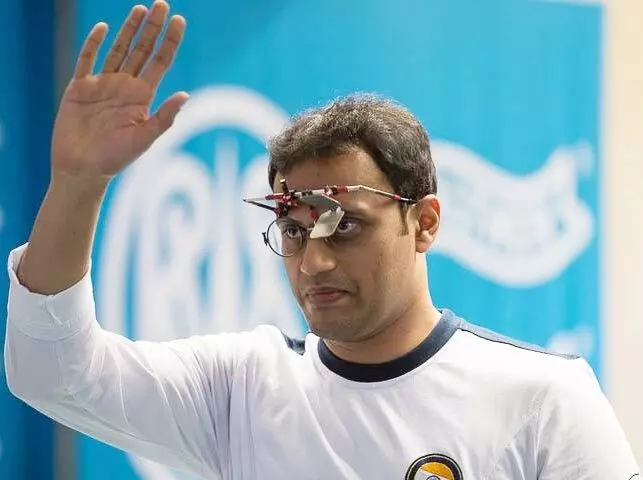At the recent World Junior Shooting Championships in Peru, India topped the medal table with 24 medals, winning 13 gold, 3 silver, and 8 bronze medals.
Among these, Suraj Sharma, a young Madhya Pradesh-based shooter clinched a silver medal in the 25m pistol men’s junior individual category.
In faraway Bengaluru, Prakash Nanjappa, Sharma’s coach was quick to put up a post on social media but he wasn’t surprised at all.
A former Olympian himself, Nanjappa credits the success of the Indian juniors to the system that has been steadily built in the country.
A growing pipeline
“From Jaspal Rana’s time itself, this transformation has begun,” he tells The Bridge, referring to the legendary shooter-turned-coach who mentored Olympic medalist Manu Bhaker.
Nanjappa explains that the results are a combination of improved infrastructure and natural instincts.
Accordingly to him, such has been the transformation that about 8,000 to 15,000 kids currently participate in the national championship cycle each year.
What then, is driving this transformation, we ask the coach.
“We Indians are naturally good at hunting, it’s in our DNA to excel at targeting and shooting. I feel everyone can reach a high level with less effort,” he explains, emphasizing that talent in shooting isn’t limited by age and that anyone can try it, regardless of background.
Nanjappa identifies three key reasons for the rising interest among young shooters.
First, he notes a direct link between shooting and academic performance.
“A survey shows that kids who take up shooting tend to excel academically due to the sport’s demand for concentration. Also, parents are increasingly supportive because shooting poses fewer injury risks compared to combat sports like boxing and wrestling.”
“The second thing is that it develops self-confidence,” remarks Prakash, highlighting how the courage to handle a pistol or rifle from a young age leads to a positive vision for their future.
Lastly, he points out that the path to becoming a national-level shooter is easier than in other sports.
“In shooting, you can directly participate in state pre-nationals and then nationals. It’s a sport where you can quickly become a national-level player,” he adds.
Nanjappa also highlights the fact that the promotion of shooting is significant at the school level via academies, much like the Madhya Pradesh Shooting Academy, where he currently coaches.
“World Cups have been held at this range, so these kids benefit from top-notch infrastructure and equipment,” he adds with pride.
Clearly, access to world-class facilities with streamlined processes and fewer restrictions is helping build India’s talent pipeline.
This, according to Nanjappa is a big shift from the time when he was competing, for opportunities back them were limited.
Imparting ‘life skills’
Nanjappa, an avid shooter, quit the sport in 2003 for a job at an MNC as a software engineer in Canada.
However, five years later, he was back in India and worked his way into top form. His resurgence was complete when won bronze at the 2014 Asian Games at Incheon and then represented India at the 2016 Rio Olympics.
Since 2019, Nanjappa has transitioned to a coaching role.
“I quit my job at my father’s insistence, and fast-forwarding, I was fortunate enough to represent the country in the Olympics. Now, I love this job as a coach because the pipeline of shooters is strong,” he says.
Nanjappa now divides his time between Madhya Pradesh and his home in Bangalore and is a firm believer in imparting ‘life skills’.
“It’s not just about developing skilled shooters but also (nurturing) individuals who appreciate the resources provided,” he says, noting that the governments now invest heavily in guns, ammunition, and other essentials for shooters.
While the grassroots appear healthy, conventional hurdles persist.
Hope amidst hurdles
“We have six selection trials now, each with significant expenses. With limited time, we often have to fly, adding to the financial burden,” he points out, noting this is a significant hurdle for young shooting aspirants.
Travel costs are even higher for junior shooters, as most parents accompany their children, doubling expenses.
However, he notes that support is growing, with organizations stepping in to sponsor talented athletes.
All said and done, when it comes to guiding youngsters keen on starting shooting, Prakash’s message is simple.
“Shooting takes time. Muscle memory is key, and the most important thing is passion. With passion, everything else falls into place,” he emphasizes, stressing the importance of finding the right coach and building a strong bond.
